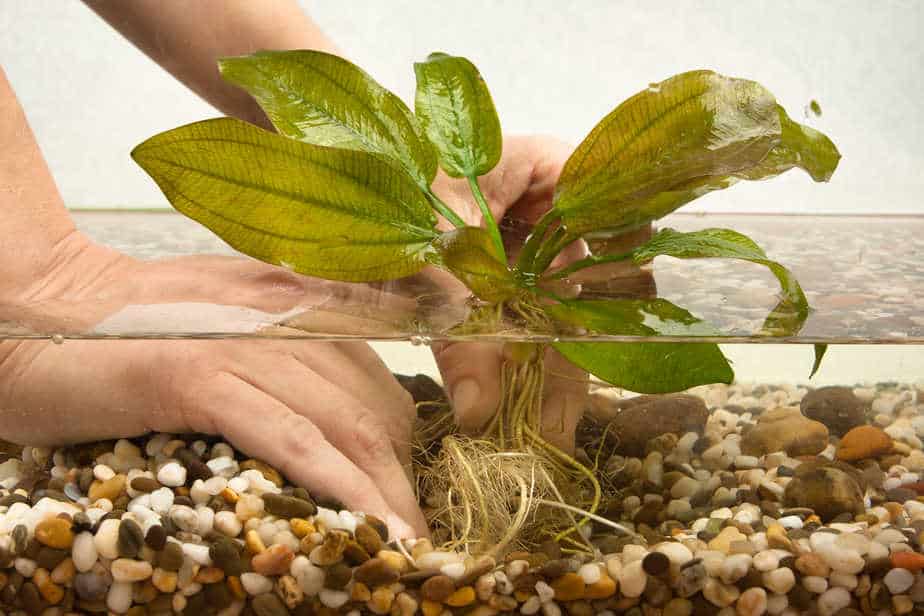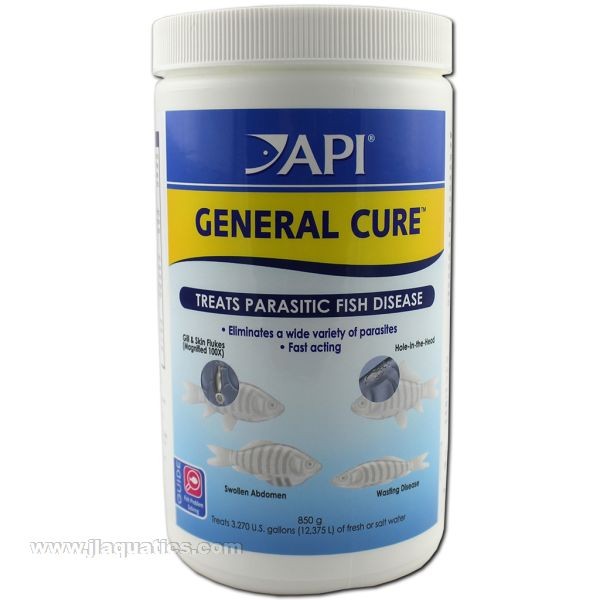How to Plant Aquarium Plants in Gravel?
To plant aquarium plants in gravel, start by preparing the substrate by rinsing it with water to remove any toxins. Then, place the substrate on the bottom of your aquarium and use a spoon or similar tool to make a small hole in which you will insert your plant’s roots. Push some of the gravel aside so that there is plenty of space for your plant’s roots around it.
Next, take out your aquatic plant from its pot and gently loosen up its root ball before inserting it into the hole you made earlier. Securely bury all of its roots at least one inch deep into the substrate and cover them with gravel until only about an inch or two are exposed above. Continue this process until all desired plants have been planted in their new home, then fill up any remaining empty spaces with more substrate if needed.
Finally, add water to bring everything together and watch as your aquarium comes to life!
Planted Aquarium With Gravel? – Very Easy!
- Step 1: Choose your aquarium plants. Make sure to select aquatic species that are compatible with the environment you plan to create in your tank, as some may require different water conditions or temperatures than others.
- Step 2: Prepare the gravel for planting. Rinse it thoroughly and make sure there are no sharp edges or pieces of debris that could damage the roots of your plants.
- Step 3: Plant each species according to its instructions. Aquarium plants typically have small root systems so they can be placed directly into the gravel without needing additional soil or substrate material for support.
- Step 4: Secure each plant in place using stones and/or weights if needed, particularly if you’re using a taller type of stem plant like an anubias barteri var nana. This will help ensure that it doesn’t float away when you fill up the tank with water later on.
- Step 5 : Add fertilizer tablets around each plant to provide them with adequate nutrients while they establish their root systems in the new substrate material over time
How to Plant Aquarium Plants in Pots?
Planting aquarium plants in pots is a great way to add an extra layer of decoration and interest to your fish tank. To do this, simply fill the pot with aquatic soil or other suitable planting medium, insert the plant into the soil, and secure it with some gravel or small stones at its base. Make sure not to press too hard on the plant as you spread the substrate around it.
Finally, cover up any exposed roots and adjust your lighting if needed for optimal growth.
Plants That Grow in Gravel Without Soil
Gravel gardening is a popular way to add colorful and interesting plants to your landscape without the need for soil. A variety of plants can thrive in gravel, including succulents, ornamental grasses, and flowering perennials. Gravel provides excellent drainage which makes it ideal for those who live in an area with heavy rainfall or poor soil conditions.
Additionally, gravel gardens require minimal maintenance compared to traditional gardens that rely on more labour-intensive practices such as tilling and weeding.
Aquarium Plants Sand Or Gravel
Aquarium plants can be planted directly in sand or gravel, though some may require more specialized substrates. When planting in either sand or gravel, it is important to ensure that the substrate is nutrient-rich and supports the growth of beneficial bacteria for a healthy tank ecosystem. Additionally, adding root tabs beneath the substrate can provide essential nutrients to the roots of aquarium plants and help them thrive.
How to Plant Aquarium Plants in Substrate?
Planting aquarium plants in substrate is a great way to create a beautiful and vibrant underwater landscape. To do this, start by preparing the substrate with nutrients and fertilizers according to your aquarium’s requirements. Next, dig small holes into the substrate that are large enough for the roots of your plants.
Place each plant into its hole, ensuring that it has plenty of space to spread out its roots. Finally, cover up any exposed parts of the root system with additional substrate before adding water back into the tank. With proper care and maintenance, you can have an amazing looking planted aquarium!
Best Substrate for Aquarium Plants
The best substrate for aquarium plants is a nutrient-rich substrate, such as clay or gravel. This type of substrate provides essential nutrients that help the plant grow and thrive in an aquatic environment. Additionally, it can also provide good water filtration and help maintain good water quality by providing bacteria to break down organic matter.
Clay substrates are usually preferred over other types of substrates because they have higher concentrations of minerals, which helps with root growth and uptake of nutrients from the water column.
Can Plants Grow in Gravel?
Yes, plants can grow in gravel. Gravel is a porous material that allows water and air to pass through, which makes it an ideal growing medium for certain types of plants. The small rocks also help anchor roots in place so the plant doesn’t move around as much when exposed to wind or other elements.
While not all plants are suited for this type of environment, some popular choices include succulents, cacti, ground covers and even some trees like Japanese maples.
Aquarium Gravel
Aquarium gravel is a type of small stones or pebbles that are often used as the bottom layer in aquariums. It serves both decorative and functional purposes, such as providing support for plants and decorations, creating an interesting texture in the water, and helping to maintain healthy water conditions by trapping debris and increasing oxygen levels in the tank. Aquarium gravel comes in a wide variety of sizes, shapes, colors, textures, and materials so you can choose one that best suits your tank’s environment.
Can Aquarium Plants Grow in Sand?
Aquarium plants can most certainly grow in sand, as long as the sand is very fine and contains some essential nutrients that are required for healthy plant growth. However, it is important to remember that different plants have different requirements when it comes to substrate type and nutrient levels; therefore, you should always research the individual species of aquarium plant before attempting to cultivate them in a sandy environment.

Credit: plantophiles.com
How Do You Anchor Aquarium Plants in Gravel?
Aquarium plants are essential to any healthy aquarium ecosystem, providing oxygen and food for fish and other aquatic creatures. Anchoring these plants in gravel is a commonly-used technique that provides stability while allowing the roots of the plant to access vital nutrients directly from the substrate. To properly anchor aquarium plants in gravel, start by creating a small hole with your finger at the desired spot in the substrate.
Next, take each individual plant out of its pot or container and place it carefully into the hole you just created. Afterward, fill up around each plant with enough substrate so that they are securely held down within their respective holes; this will help prevent them from being pulled back out when disturbed by heavy water flow or filter intakes.
Finally, use a pair of tweezers to gently press down on any exposed parts of each root system to ensure complete contact between them and their newly established base layer beneath them.
With these simple steps you can easily anchor your aquarium plants firmly into place for a long lasting underwater garden!
How Do You Put Plants in Gravel?
Putting plants in gravel is a great way to add beauty and color to any outdoor area. It’s also an easy project that can be done with minimal effort. Here are some tips on how to successfully put plants in gravel:
1) Select the right type of plant for where you intend on planting it. Consider factors like sun exposure, water requirements, and soil type when selecting your plant.
2) Prepare the area by removing any existing vegetation or debris from the surface of the gravel. Dig out a shallow hole for each individual plant about 6-12 inches deep using a shovel or trowel depending on size and shape of your potting container.
3) Place appropriate sized stones around each individual root ball to help keep them in place while they become established within their new environment over time.
4) Fill up the hole with enough amounts of gravel so that when watered it will cover up most of the exposed roots without burying them too deeply into the ground below. This will help ensure proper drainage as well as provide additional support structures for growing roots which may need extra stability if planted directly into soil layers beneath existing turf or other hard surfaces such as concrete patios or driveways.
5) Water regularly according to what is recommended for your particular species and climate conditions; this should usually be done once every few days during active growth periods throughout spring/summer months but may need more frequent watering during hotter times as well (depending). With correct care, these plants should thrive in their new home!
Can You Grow Aquarium Plants Without Soil?
Yes, you can grow aquarium plants without soil. Aquariums are a great way to add a bit of life and color to your home or office space, but they don’t always have to be filled with fish and other aquatic creatures. You can also use them as an attractive and low-maintenance garden by growing aquarium plants without soil.
This is possible because many types of aquatic plants don’t need soil in order to thrive; instead they get the nutrients they need from their environment, such as the water itself or substrate material like gravel or sand. The most popular type of plant for these kinds of setups is called a “bog plant,” which grows roots that reach down into the water column for sustenance. Other options include floating species like lilies, hornwort, duckweed, and hyacinths; these varieties obtain their nutrition from algae suspended in the water column around them.
Some more adventurous aquarists may even try their hand at cultivating live mosses on pieces of driftwood submerged in tanks! Regardless of what kind you choose to go with, having some vegetation added to your tank will help create balance between oxygen levels and carbon dioxide – both vital components for healthy fish populations – while also providing habitat for beneficial microorganisms that help break down waste materials produced by any inhabitants living inside it.
Do Aquarium Plants Prefer Sand Or Gravel?
When it comes to choosing the type of substrate for your aquarium, you may be wondering if sand or gravel is best for your aquatic plants. Well, the answer depends on what type of plant you have as some prefer sand while others require a coarser substrate like gravel in order to get their essential nutrients from the environment. Generally speaking, most rooted plants such as Java fern and Anubias will do well with either sand or gravel substrates; however, many stem plants and fast-growing species tend to do better when planted in a medium-grain gravel which allows them to easily take hold and receive their necessary nutrition.
Sand can also provide an ideal base for these types of plants but should be mixed with other materials such as clay balls or limestone chips in order to prevent compaction over time which could cause poor growth due to lack of oxygenation and nutrient absorption by roots. Overall, when selecting between sand or gravel it all depends on what type of plant you are trying to grow!
Conclusion
In conclusion, planting aquarium plants in gravel is a simple process that can be done with minimal effort. All that is needed to successfully plant aquarium plants in gravel are the right type of gravel, fertilizer tablets, and proper care for the planted plants. With these few steps and some patience, you will soon have a beautiful underwater garden!





